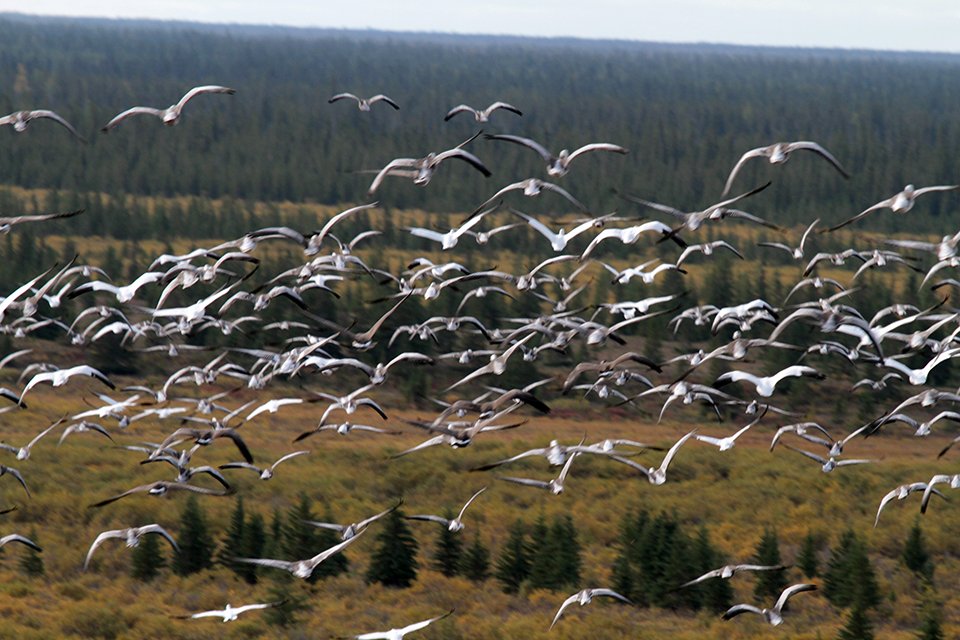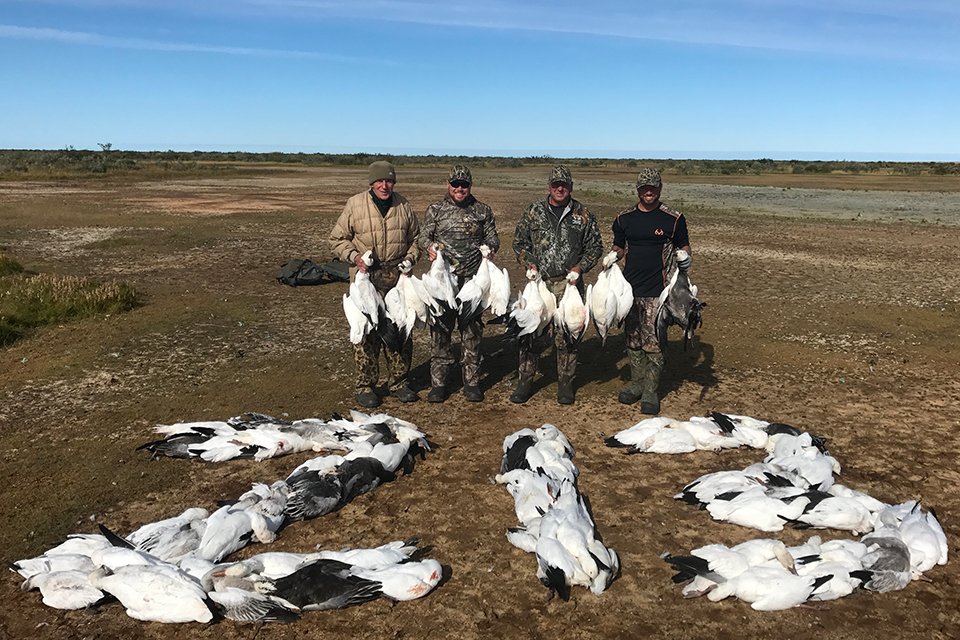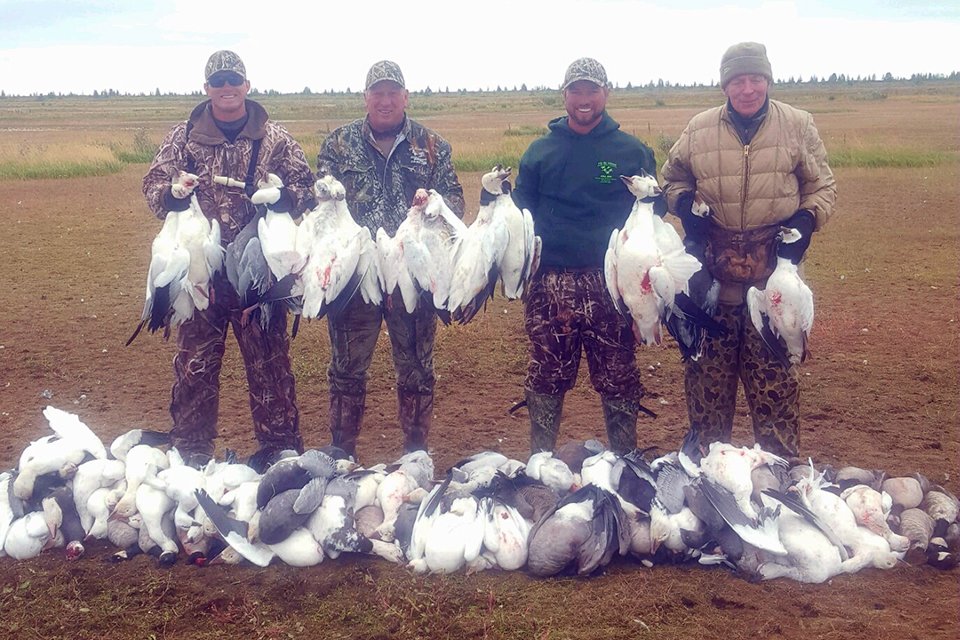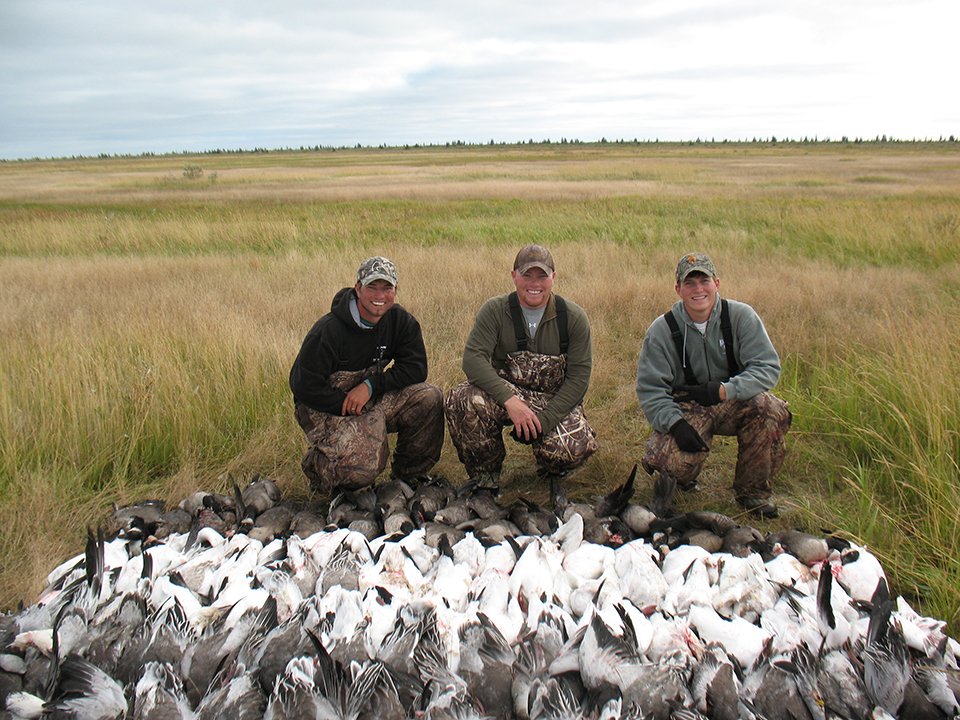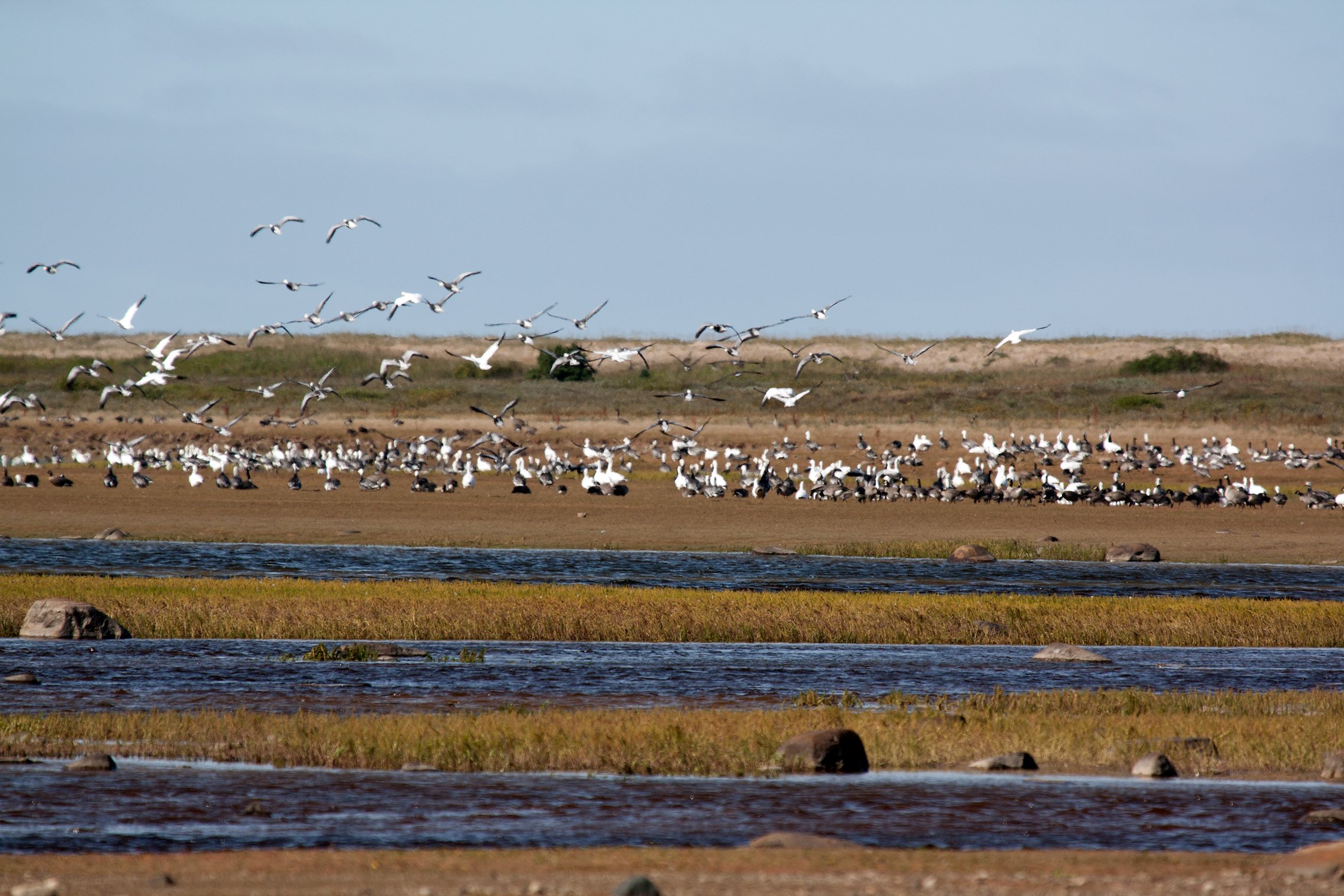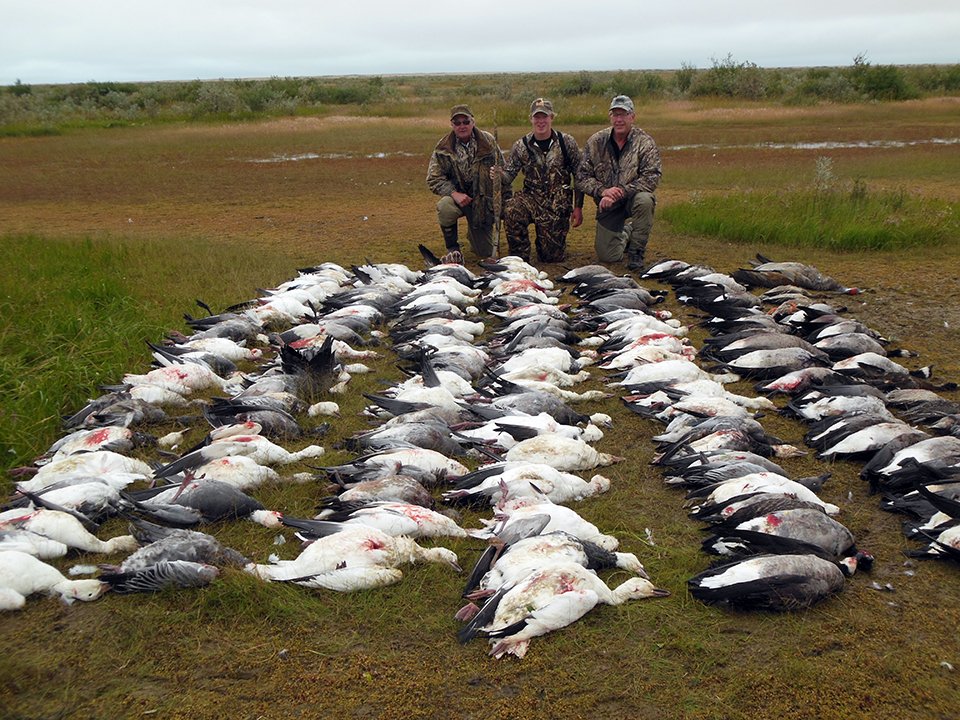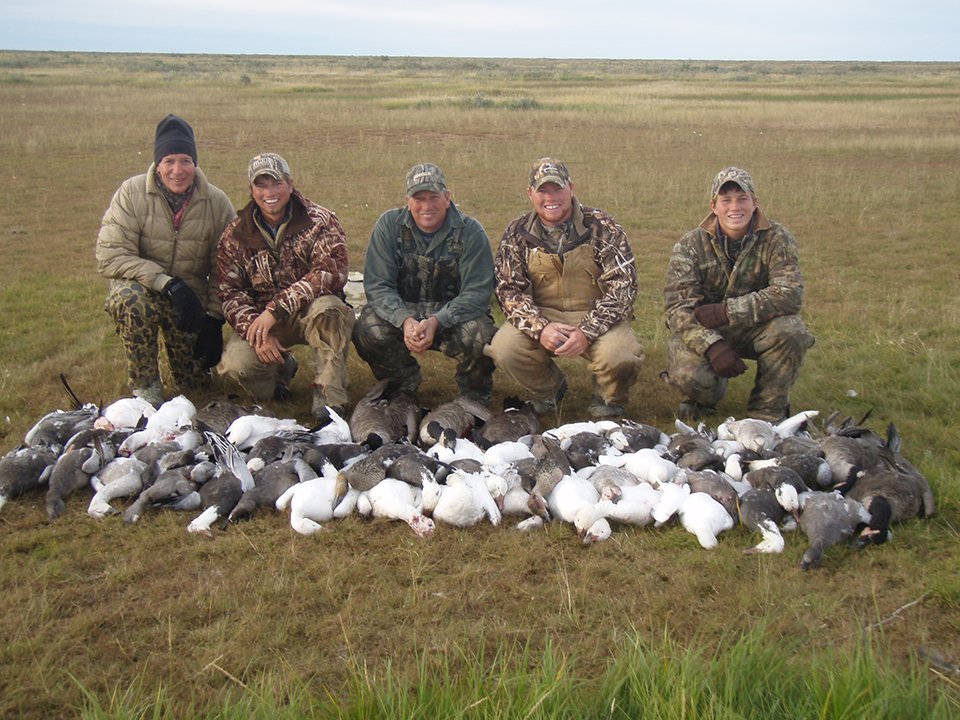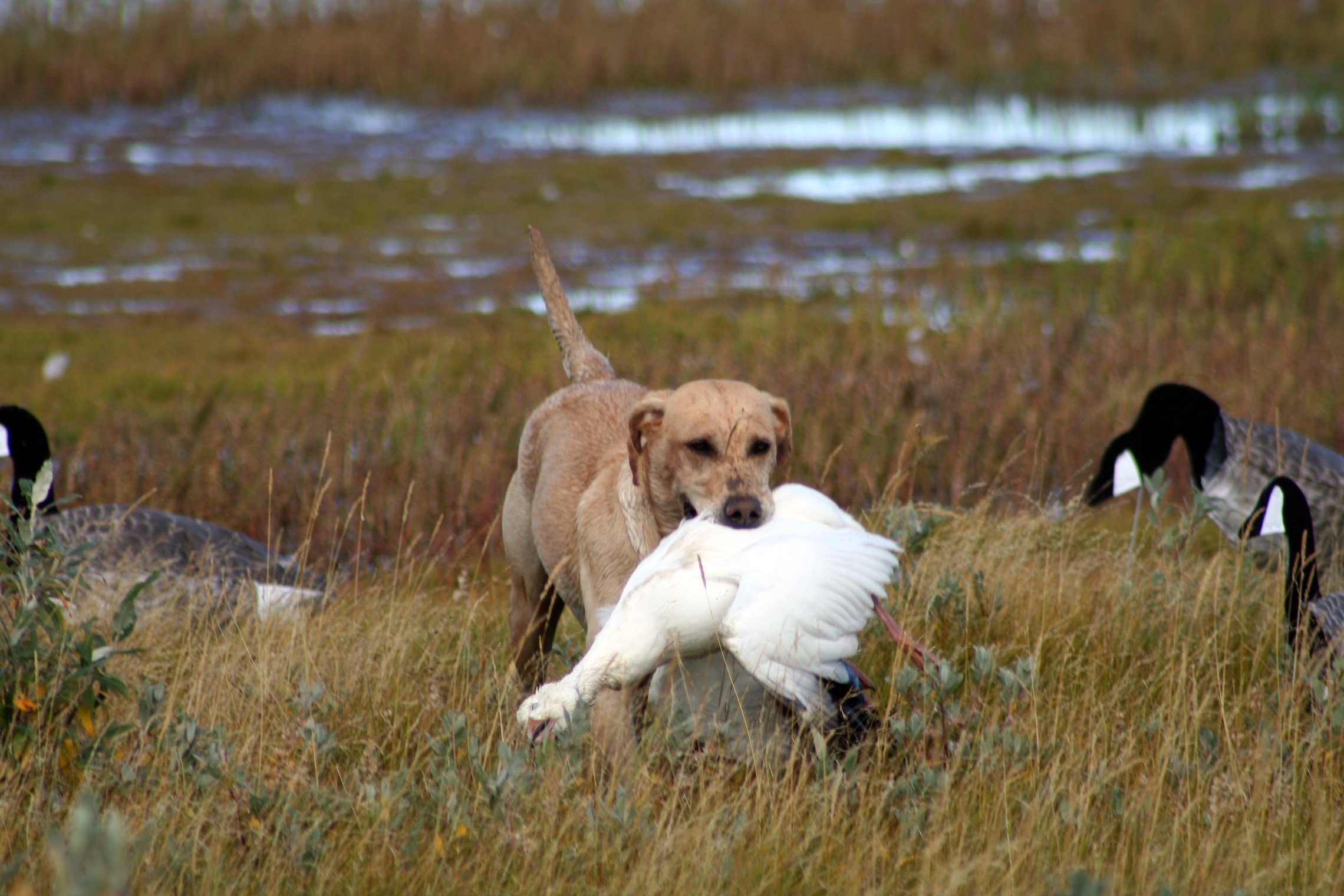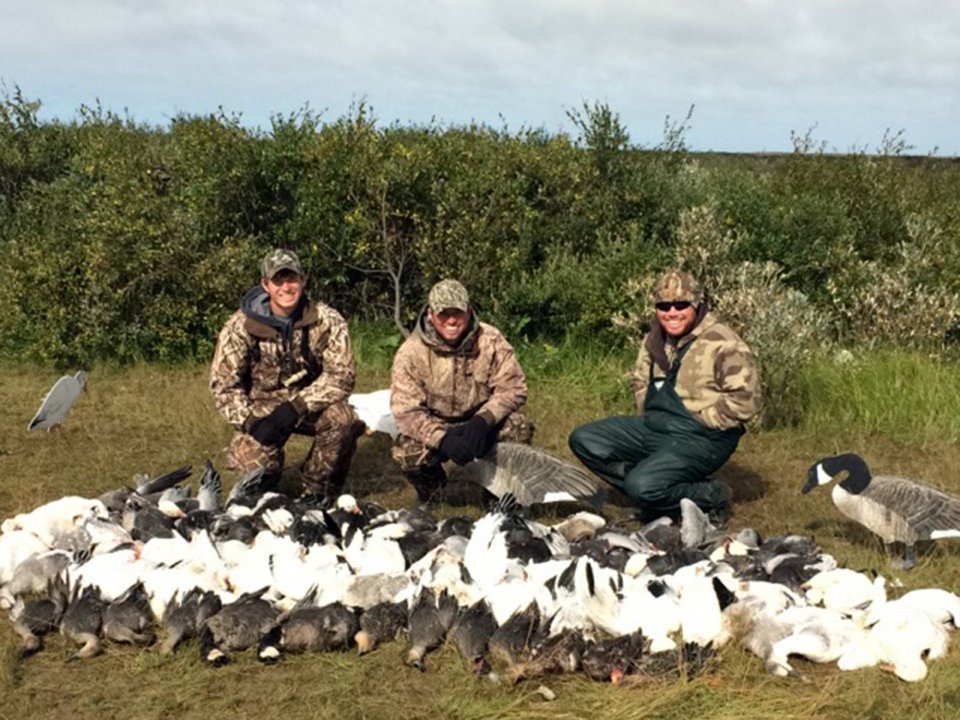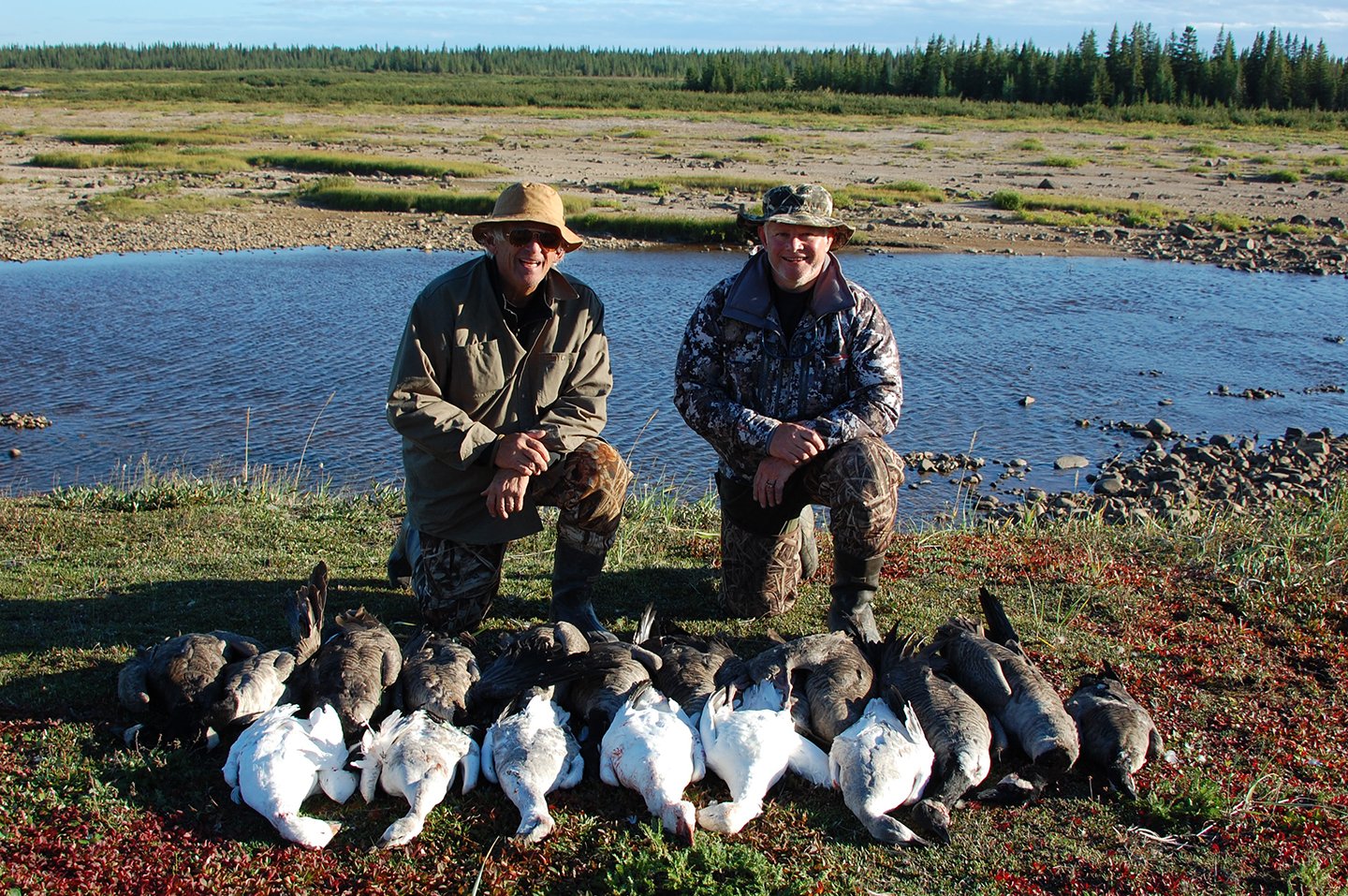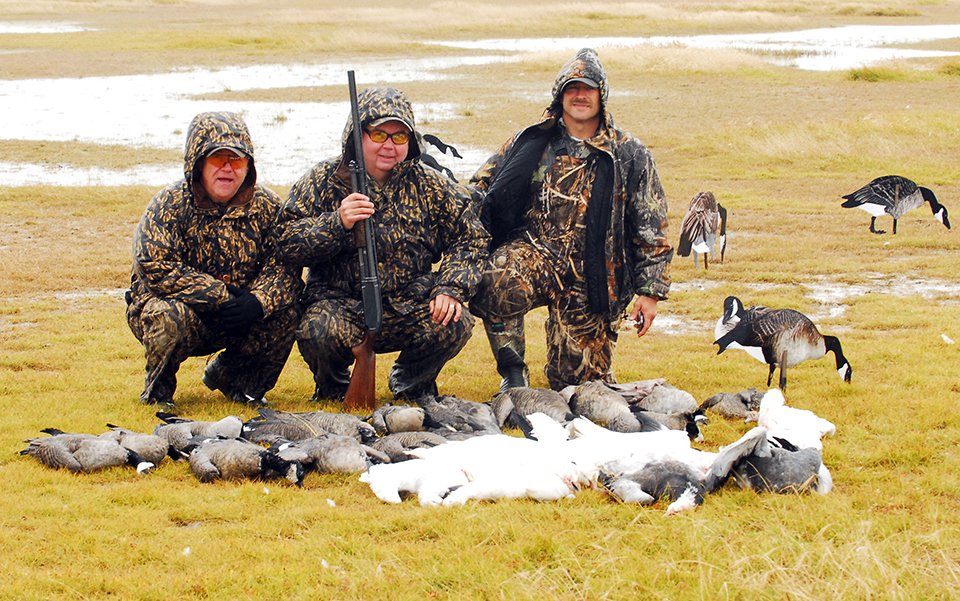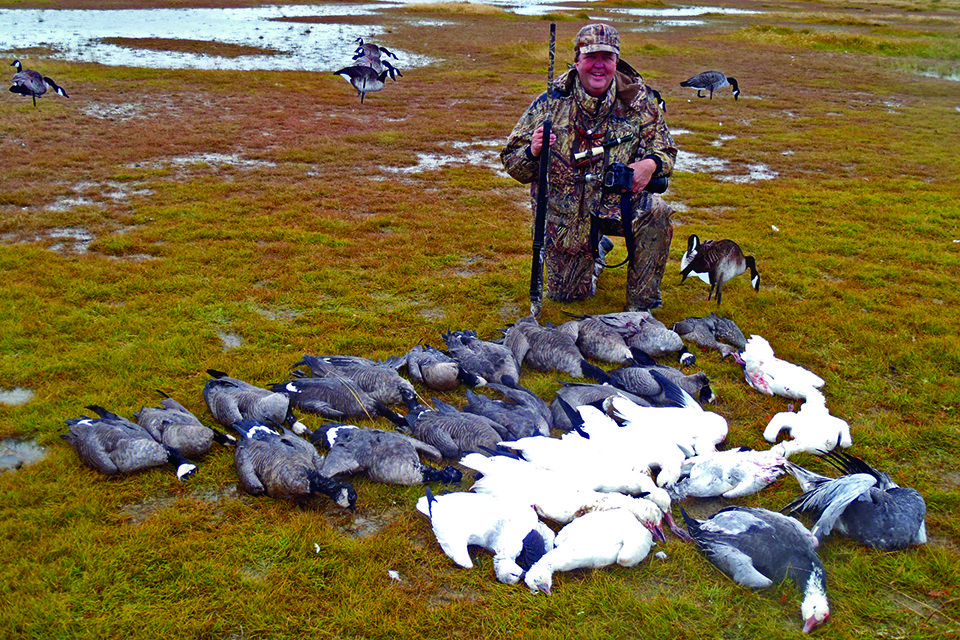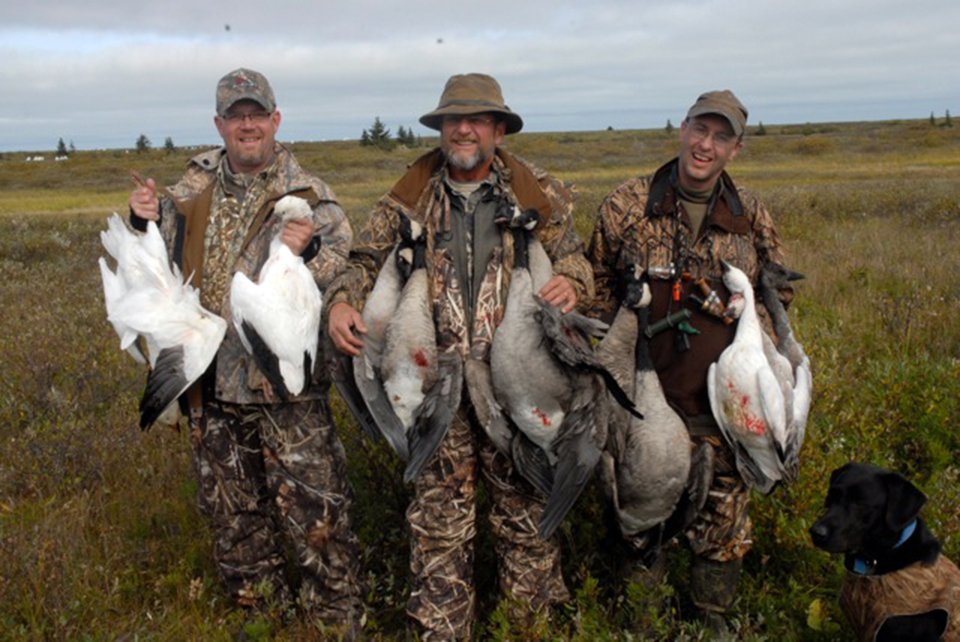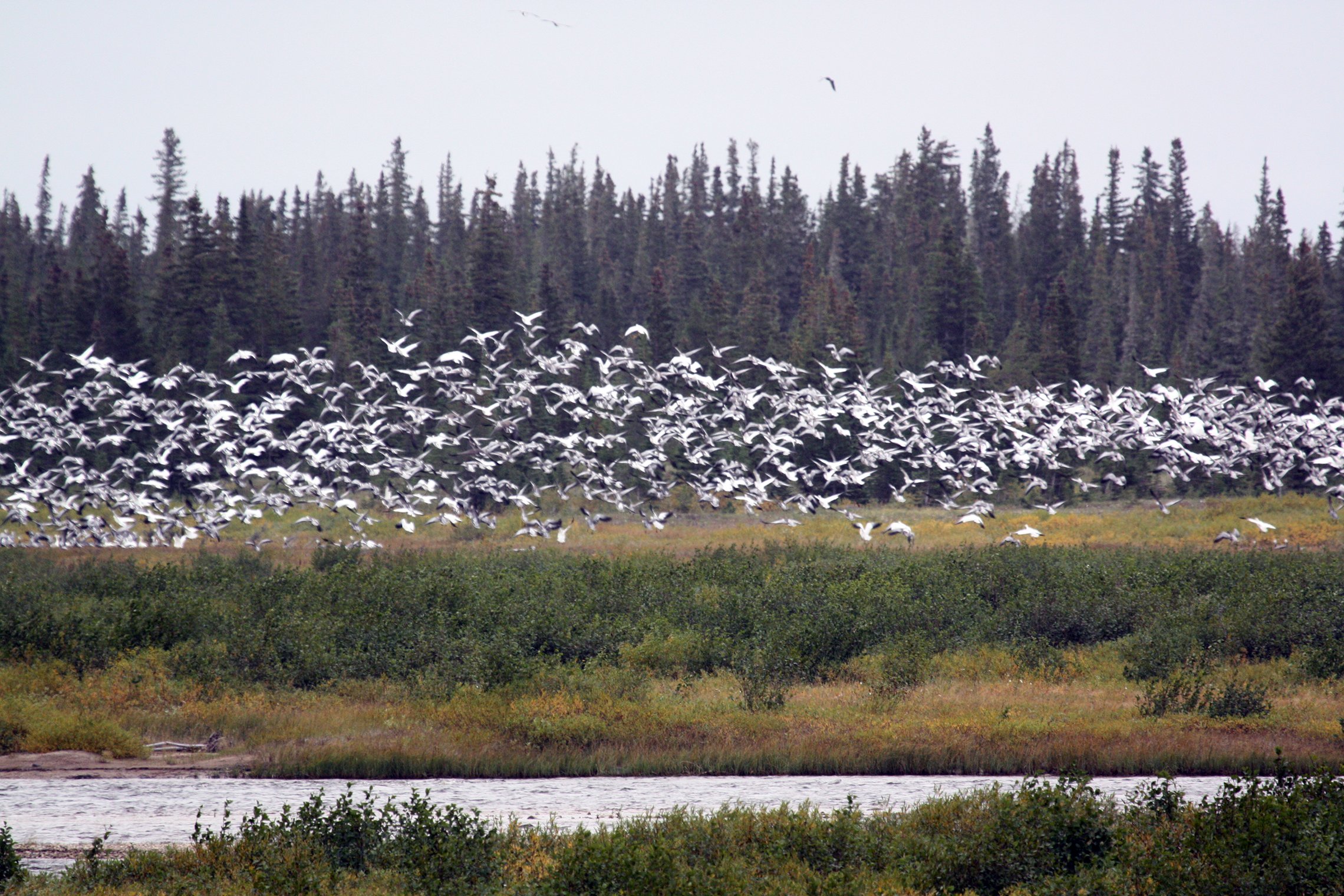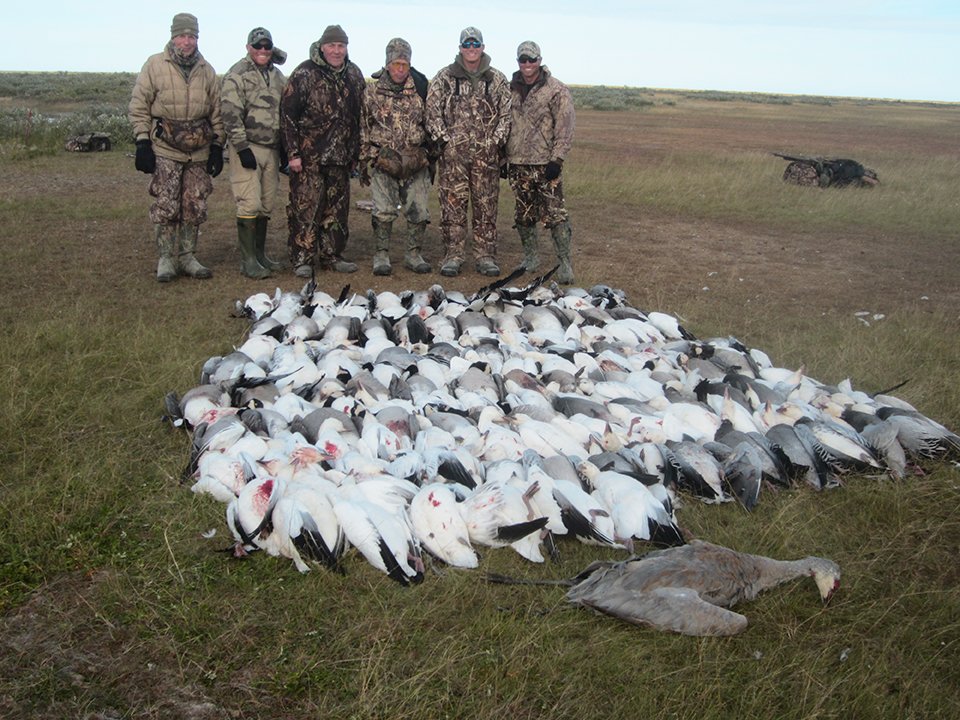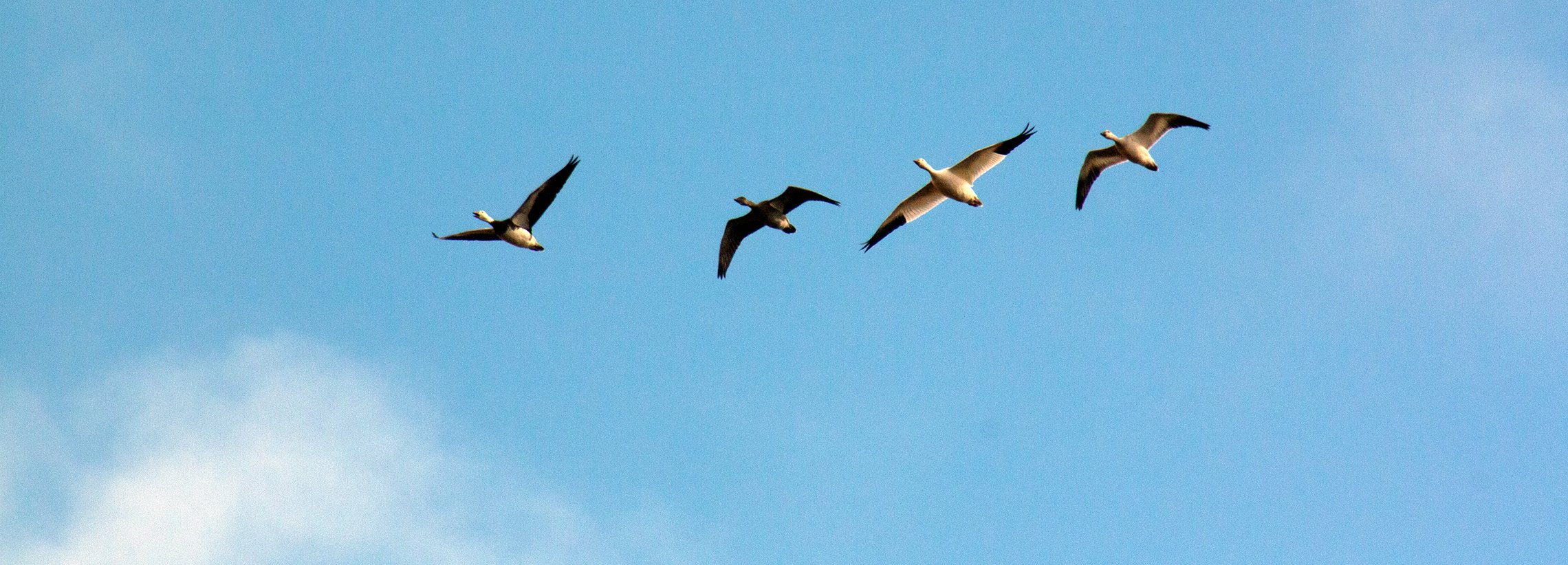Snow/Ross's Geese
Snow Geese
Anser caerulescens
At Kaska we have a mix of approximately 50% snows and 50% blues. Good numbers of Ross’s geese are also seen at Kaska. In recent years we have also seen small numbers of greater snow geese mixed in with the population of lesser snows and blues.
Snow geese start to appear along the western Hudson Bay Lowlands in early September and the migration can last as long as early October, depending on weather conditions.
Manitoba has generous bag limits on snow geese with a daily limit of 50 birds per day and no possession limit.
Ross’s Geese
Anser rossii
The Ross’s Goose is a smaller version of the Snow Goose, but has a shorter neck and stubbier bill. The Ross’s Goose also has a blue colour morph, however Blue Phase Ross’s Geese are very rare, with an estimated occurrence of 1 in 10,000.
Unlike Snow Geese, Ross’s Geese forage by grazing and only pull roots and tubers from the ground only if it has been substantially softened by heavy rain.
The main population of Ross’s Geese migrates from the Northwest Territories to central California. Ross’s Geese often travel in flocks mixed in with Snow or other geese, and are easily attracted to decoys. The population of Ross’s Geese was estimated as low as 2 – 3,000 birds in 1931, but since that time the North American population had grown to 3 million birds in 2011. The mid-continent population of Ross’s Geese was estimated at 233,000 birds by the U.S. Fish & Wildlife Service’s 2020 Waterfowl Population Status Report.

